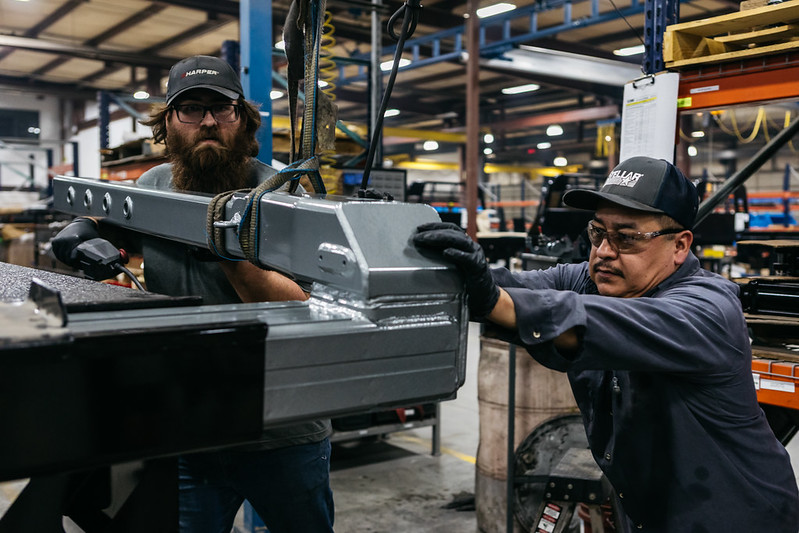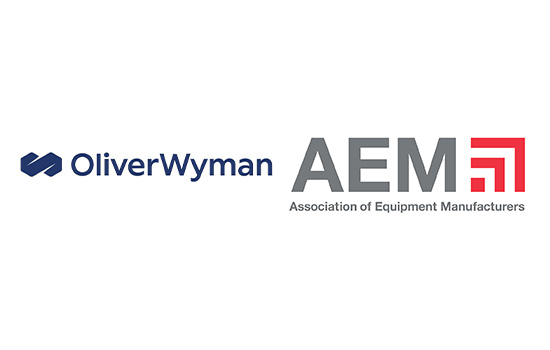Making the deluge of construction data actionable and predictive is the holy grail.
Getting there, however, is another story.
First, this data comes from many sources – construction machines, building information modeling, field and office software, to name a few. Getting everything to play well together – enough to deliver sought-after insights – has its challenges. Second, contractors are likely not even using all the data that’s now available to them.
“There’s a difference between data and actionable information,” said James Bretz, connectivity services territory manager, Volvo Construction Equipment. “It’s got to be simple, actionable and useable without needing a lot of resources on the contractor’s end.”
“Where we really struggle today is combining data points in way that it’s easy for customers to understand,” said James Leibold, product manager of connectivity, John Deere. “Most machines are giant computers on tracks and figuring out how to show this data in a manner that’s easily digestible is the true hurdle we need to overcome as an industry.”
And of course, equipment data is just one part of the overall inputs coming from the field and office.
“Where we really struggle today is combining data points in way that it’s easy for customers to understand... Figuring out how to show this data in a manner that’s easily digestible is the true hurdle we need to overcome as an industry.” -- John Deere's James Leibold
AEM is committed to taking an active role in examining and shaping a shared industry vision for the future of building, so as to offer equipment solutions and insights to help the construction industry succeed. In support of that goal, we have released The Future of Building, a whitepaper highlighting the most significant trends impacting construction in the years to come. Learn more.
Construction data underlies informed decisions.
Getting real-time data to people so they can make informed decisions is part of the battle, said Anne Hunt, director of data and analytics, Trimble. “The automation of data collection will help bring field data to the back office and create a virtual circle that will continue to evolve,” she said.
No matter where the data originates, decision makers need it in a way that makes sense to them, said Michael Smith, senior director of growth and innovation, Trimble.
For example, although field people are sometimes skeptical about technology, oddly enough a phone is not viewed as technology, Smith said. “It’s not scary because they use it every day. So, the medium used is meaningful.”
And data results still need a human eye, said Gregg Schoppman, partner, FMI. “It requires you to sit down and talk about strategy. The numbers are just one part of the answer,” he added.
Where are the data disconnects?
The term “dark data” has been coined to represent available data that just sits there, unused.
This can include a helpful machine feature that is unused because a.) the operator doesn’t know it’s there and b.) the owner doesn’t know that data is available to show whether it’s being used, Leibold said.
For example, Deere’s blade flip allows a grader operator to flip the blade from side to the other, mirroring the cross slope. “If you combine the blade position with engine load, you can actually start to tell when an operator is being productive versus just driving around,” Leibold said. These two data points could then be stacked with others that tell the amount of material being moved.
Other disconnects lie in contractor systems. There are still large companies that rely on paper processes, said Russ Young, chief business development officer with construction equipment fleet management platform Tenna.
“They’re having operators write down their hours on a paper, with the superintendent then driving it to the office,” Young said. “Or they’re putting together a nice-looking Power BI dashboard and the inputs are wrong. There are a lot of data islands.”
Construction data can provide a clear picture.
Key data for field personnel centers on labor, material, equipment and production, Smith said. The picture becomes clearer if they can compare how their production and costs stacks up against how a project was estimated.
Bringing that information to mobile gives crew chiefs the ability to take immediate action if things are lagging. “Instead of being reactionary, it’s empowering,” Smith said.
In the office, the focus shifts to which projects and how many projects should be bid, Smith said. “Contractors can see where they win the most, and which projects are the most or least profitable,” he said. “How many projects do they have to bid on at X margin before they win one?”
Benchmarking data is also available, added Hunt. For example, with its non-residential data base, Trimble can provide insights into what’s happening in a local construction economy. Instead of just relying on talk on the street, users can find data to support their market decisions.
“We can really start looking at predictive data, and how we can help our customers strategically manage their business better,” Smith said. Contractors, for instance, can take incoming data and give each project a health score to identify strategic risk and opportunity.
Also recognize that data can Identify new challenges, Bretz said. “It brings to surface things that aren’t necessarily related to the data itself, such as the need for more operator training or the need to reconfigure your site,” he said.
The data pathway must be taken in stages.
“In order for construction to get to the dream of having everything on one dashboard you have to start by capturing the basics,” Young said, talking specifically about equipment data.
This includes location, hours, preventive maintenance intervals and maintenance. “It blows my mind that I can get in a car and my spouse knows where I am, but a construction company doesn’t know where a $120,000 piece of equipment is,” Young said.
Young sees companies at four different stages in their equipment data journey, ranging from using a manual whiteboard to employing some automation to level three, where contractors realize full integration with its enterprise resource planning system.
And level four? “That’s a bit of science fiction right now,” Young said. “You’ll have a single dashboard source of truth combined with autonomous machines, robotics, electrification, drones, etc., to create a true business intelligence system. That in turn will create predictive analytics, where you can anticipate problems and prescribe solutions.”
What can happen with the right numbers.
Schoppman has seen contractors use their overall project data to recognize potential risks, such as overusing a sub.
“There’s disparate incoming information on various jobs,” Schoppman said. Data could flag a risky situation much earlier instead of relying on team members trading information.
And remember data isn’t there for data’s sake, Schoppman said. It should give you insight not only into what’s happened but on how you got there and even how you could do things better the next time.
“You can look at quantifiable data all day long, but it should also be providing the some of the how-to map of what you want to accomplish,” he said.
“The automation of data collection will help bring field data to the back office and create a virtual circle that will continue to evolve.” -- Trimble's Anne Hunt
How construction data is evolving.
On the equipment side, contractors are now seeking overall job insights rather than single-machine analytics, Leibold said. This includes looking at how all the machines are performing, what’s being under or over utilized, and whether production goals are being met.
Data inputs will change as the industry transitions into more electrification and automation, Bretz said. For example, battery capacity and charge cycles will be key indicators in electric machines. And while idle time is a key metric in diesel-powered machines, it’s not a factor on electric machines.
The need to keep the iron connected as telecommunications change from 5G and beyond is another consideration.
“In order for this all to work, you have to have reliable connectivity,” Bretz said. “Machines are expected to last 10 years and beyond and technology changes about every two to three years. There’s a constant battle in keeping machines connected. It’s not as easy as sending them a new phone.”
Field and office data will be more integrated.
The push-pull between field and office data will be more integrated, Leibold said: “There’s so much technology that will start integrating into telematics platforms.”
Finally, instead of dreading using data, people should view it more like an Iron Man-type experience, Smith said.
“He’s flipping through screens and having a great time. We want everyone to feel that way about data. Data is there to help us improve our choices. We’re augmenting humans, and that’s a big deal.”
Want to learn more?
Many would agree that a transformation of the construction industry has already commenced. Technology is changing the way buildings are designed, equipment operates and organizations function. Renewable energies are being leveraged more often and in more ways. A generational shift in the workforce is already underway.
AEM Vision Team and Futures Council members spent countless hours discussing how these influences, among many others, could transform the construction industry over the next 10 years. For more information on The Future of Building and other trends impacting the equipment manufacturing industry and the customers it serves, visit aem.org/insights.
For more AEM member perspectives, subscribe to the AEM Industry Advisor.





